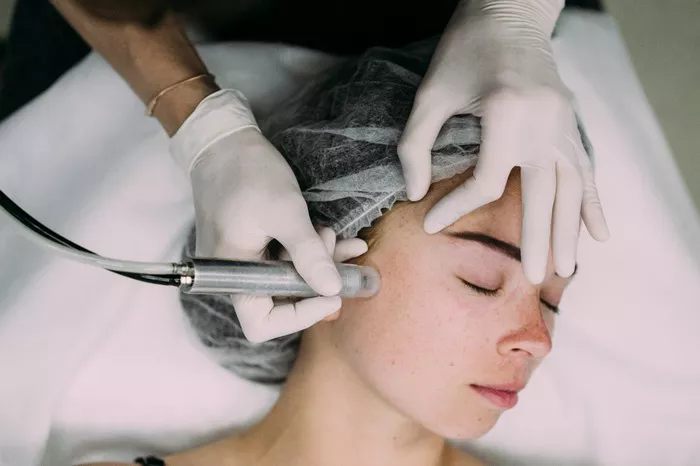Cosmetic treatments, particularly dermal fillers, have become a go-to solution for individuals seeking to revive lost volume and enhance various facial features. Among these treatments, cheek fillers stand out not only for their primary goal of restoring facial volume but also for their secondary benefits, such as addressing smile lines and nasolabial folds. To shed light on the ins and outs of cheek fillers, we turned to Dr. Nancy Samolitis, MD, FAAD, a board-certified dermatologist and owner of Facile Dermatology + Boutique.
Understanding Cheek Fillers: Types and Composition
Several types of dermal fillers can be utilized for cheek augmentation, with hyaluronic acid-based fillers being the most popular. Hyaluronic acid, a naturally occurring substance in the body, can hold up to 1,000 times its weight in water. Dr. Samolitis prefers Restylane Contour, a hyaluronic acid filler known for its natural feel, minimal swelling, and prolonged effectiveness. Another option is Sculptra, made from polylactic acid, which stimulates natural collagen production, albeit with a gradual onset of results.
Addressing Various Skin Concerns with Cheek Fillers
Cheek fillers primarily aim to restore volume lost due to aging, but they can also contour cheekbones, lift nasolabial folds, and combat sagging jowls. Dr. Samolitis emphasizes the importance of strategic filler placement, distinguishing between mid-cheek and lateral cheek regions. Mid-cheek injections can combat aging-related volume loss and brighten undereye circles, while lateral cheek injections, either on or below the cheekbone, contribute to a lifted appearance.
Cost Considerations for Cheek Fillers
The cost of cheek fillers varies based on geographical location and the number of syringes used. Typically ranging from $700 to $1,200 per syringe, the total expense is determined by the desired results. Dr. Samolitis recommends consulting with a qualified professional to determine the appropriate number of syringes based on individual goals.
Candidate Criteria and Potential Risks
Cheek fillers are generally suitable for most individuals, with lidocaine allergy being a notable contraindication due to its presence in many hyaluronic acid fillers. People with autoimmune diseases prone to inflammation should consult with their doctor to assess potential risks. While swelling and light bruising are common side effects, serious complications such as vascular occlusion or blindness are extremely rare.
Duration and Administration of Cheek Fillers
The longevity of cheek fillers varies depending on placement and natural facial movement. Dr. Samolitis suggests an average duration of about a year, with some cases lasting up to two years. The administration of fillers can be done through traditional needles or cannulas, with both methods considered safe. Dr. Samolitis recommends discussing preferences with the practitioner to achieve optimal results.
Preparation, Aftercare, and Downtime
Pre-appointment measures to reduce bruising, such as avoiding alcohol and blood-thinning medications, should ideally be taken two weeks before the procedure. Mild soreness, swelling, and bruising may occur after the treatment, with recovery generally lasting a few days. Post-procedure precautions include avoiding strenuous exercise and certain facial treatments for a specified period.
Choosing the Right Practitioner
Selecting a qualified practitioner is crucial for a successful outcome. Dr. Samolitis advises against opting for inexperienced providers and emphasizes the importance of consulting board-certified dermatologists or nurse practitioners working alongside them. Thorough research, asking questions, and establishing trust are paramount when entrusting someone with facial injectables.
In summary, cheek fillers offer a versatile solution for facial rejuvenation, addressing volume loss and enhancing facial contours. Understanding the nuances of the procedure, including filler types, placement strategies, and aftercare, is essential for individuals considering this cosmetic treatment.


